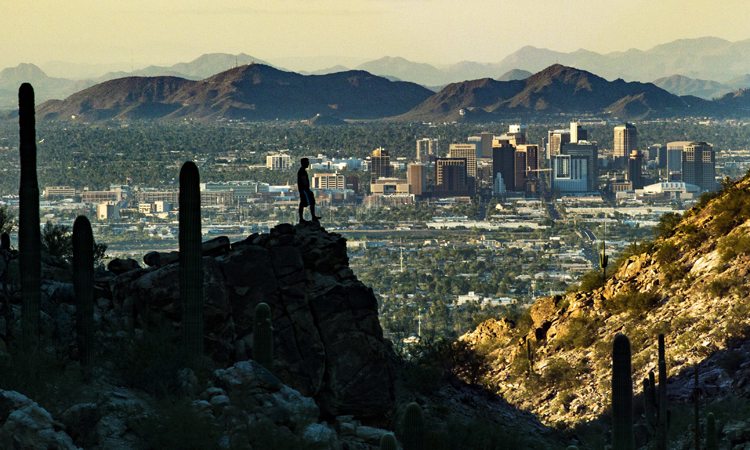When you hear about all these people making Greater Phoenix their new home, do you wonder where people are leaving to move to Metro Phoenix?
READ ALSO: Phoenix No. 1 in U.S. for life sciences employment growth
The Top Migration Sources for Greater Phoenix
The U.S. Census Bureau recently released data covering five years of migration patterns from its 2020 American Community Survey.
Topping the list for new Phoenicians was the Los Angeles-Long Beach-Anaheim, California metro area. More people moved into Greater Phoenix from L.A. than the entire population of El Mirage. Just about 38,000 Angelinos chose to make Phoenix their new home. The more than 11,600 people moving north from Tucson put that metro second on the list.
Asian countries were the third-largest group, with over 10,500 people moving to Phoenix, almost the same number as the combined total of Central American, Mexican and Canadian immigrants coming to the Valley.
Anyone wondering why the Cubs sell out all their spring training games and why so many Chicago- restaurants open in Phoenix needs to look at Windy City’s contribution to Phoenix’s nation-leading population growth. The Chicago metropolitan area, which includes counties in Indiana and Wisconsin, was the fourth-largest contributor of new residents, with almost 8,000 people leaving Lake Michigan snow for Sonoran desert sunshine.
Central America (not including Mexico) ranked fifth, adding nearly 7,000 people to the Greater Phoenix population. Other metropolitan areas rounding out the top ten include Seattle, San Diego and Riverside, California, Flagstaff, and the combined totals from Mexico and Canada (the Census Migration Report does not separate the countries but instead combines them as “Northern America”).
The Migration Patterns Are Not a Surprise
None of these migration patterns comes as a surprise to Phoenix Mayor Kate Gallego. “Phoenix is a city full of opportunity. People come here to improve their lives,” said the Mayor. “Large businesses are finding we have well-trained professionals in key industries like biosciences, engineering, and green energy. Small businesses are finding the support and resources they need to grow and thrive. Our new neighbors like the job opportunities, the accessible outdoor life, and the kind of welcoming neighborhoods that make them feel right at home.”
Arizona Continues Fast Population Growth
Even though the 2020 Decennial Census numbers have hardly been digested, the U.S. Census Bureau released its 2021 state population estimates on December 21. The new data projects Arizona will grow by nearly 100,000 people in 2021 over 2020, making the state the third fastest-growing. Only Texas and Florida added more people than the Grand Canyon State. Arizona continues to rank 14th nationally in population.
Over the last three national census counts, seven out of ten new Arizonans moved into Greater Phoenix, a percentage that has increased each decade. When Census 2021 county and metropolitan area population estimates are released in March 2022, it is likely that the Valley will once again top the nation in population growth.
“This data affirms what we are seeing in the market every day,” said Christine Mackay, Phoenix Community and Economic Development Director. “We are excited to continue to see impacts of Phoenix’s business environment, large workforce and quality of life in the attraction of new businesses and jobs into our community.”
Top 20 sources in in-migration to Metro Phoenix
1. Los Angeles, CA
2. Tucson, AZ
3. Asia
4. Chicago, IL
5. Central America
6. Seattle-Tacoma, WA
7. San Diego
8. Riverside-San Bernardino, CA
9. Flagstaff, AZ
10. Canada and Mexico
11. Portland, OR
12. New York City
13. Denver, CO
14. Minneapolis-St. Paul, MN
15. Prescott-Prescott Valley, AZ
16. San Francisco Bay Area, CA
17. Las Vegas, NV
18. Europe
19. Dallas-Fort Worth, TX
20. Salt Lake City, UT




